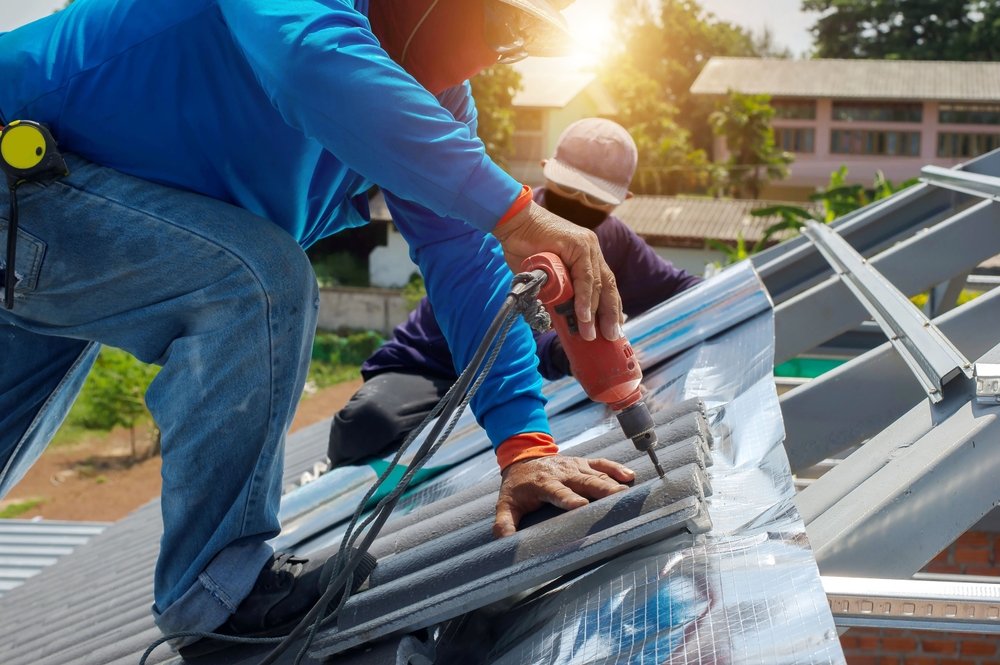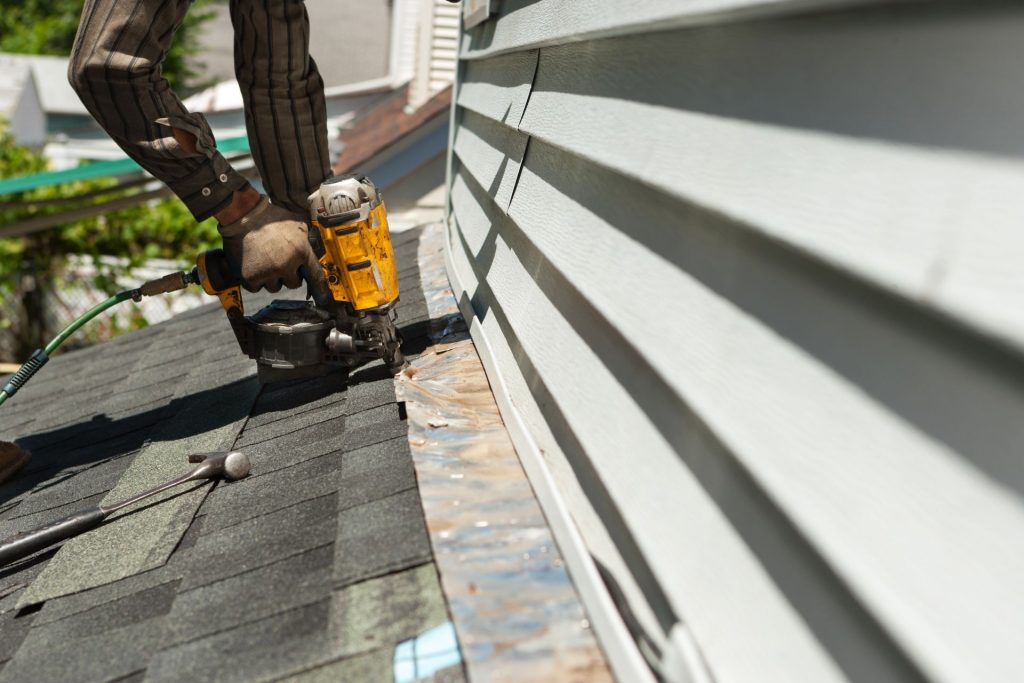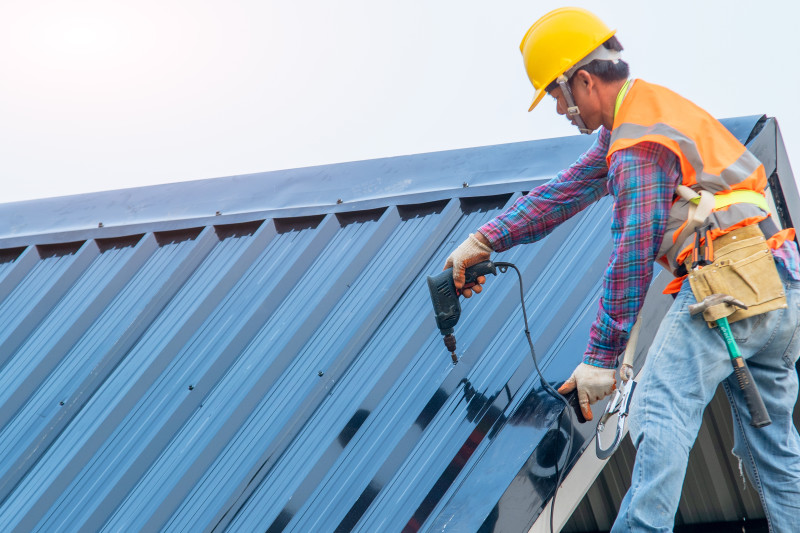Key Factors To Consider for an Effective Roofing System Setup: Achieving Longevity and Efficiency
In getting started on the journey of roof covering installment, one need to focus on key considerations to guarantee both longevity and efficiency. The selection of products, tailored to withstand regional climate problems, plays a critical role in preserving architectural stability. Equally crucial is the layout, which should accommodate correct water drain and supply appropriate assistance. Moreover, adopting finest practices throughout setup can significantly reduce prospective concerns such as moisture buildup and power inefficiency. As we check out these aspects, it becomes apparent that an effective roofing installation is not merely concerning covering a structure yet about crafting a resilient and sustainable solution. What are the essential elements that really make a difference?
Selecting the Right Materials

Environment plays an essential duty in material choice. In regions susceptible to heavy rains or snow, products like asphalt roof shingles or metal roofing with high water resistance are recommended. Alternatively, in warm environments, products with reflective properties, such as awesome roof membrane layers or tiles, can aid decrease energy prices by dispersing sunlight.
Spending plan factors to consider likewise affect material selection. While costs materials like slate or clay ceramic tiles offer resilient performance, they feature greater in advance prices. Nonetheless, they can confirm affordable in time because of their minimal maintenance requirements and extended life expectancy.
Last but not least, the building style of the building ought to integrate with the roof product. For example, conventional homes may gain from wooden tiles, whereas modern-day structures might go with smooth metal surfaces. By very carefully weighing these elements, you can pick materials that line up with both practical and visual goals.

Comprehending Roofing Layout
Comprehending roof design is essential in accomplishing a well-functioning and visually pleasing framework. The style of a roofing system impacts not just the aesthetic appeal yet likewise the architectural honesty and capability of the building. An attentively made roofing system can enhance the general building design while making certain effective water drainage, insulation, and ventilation.
Trick components of roofing system style include the pitch, shape, and architectural assistance system. The pitch, or slope, establishes how effectively water and debris are lost from the roofing surface area, influencing the life-span of roof products. Typical roof shapes include gable, hip, level, and mansard, each offering unique advantages and visual high qualities. Gable roofing systems are prominent for their simpleness and efficient water shedding, while hip roofings offer extraordinary security in high wind areas.
Structural support group, such as trusses and rafters, are crucial in distributing go now weight and keeping the roofing system's stability. Appropriate design makes certain that the roofing system can withstand environmental loads and stand up to contortion. Furthermore, incorporating functions like overhangs and eaves can protect the building's façade and enhance energy efficiency by providing shade and lowering warmth gain.
Inevitably, a well-considered roofing system design equilibriums create, work, and durability, contributing to the long-lasting success of the installation.
Environment Considerations

In hot and warm environments, roof covering materials need to mirror, instead of take in, solar warmth to preserve power efficiency and stop too much thermal expansion, which can cause material degradation - Keep Dry Roofing St Peters MO. On the other hand, in cooler regions, materials should supply ample insulation to stop warmth loss and withstand freeze-thaw cycles that can trigger splitting and various other architectural concerns
In addition, the choice of color and finish can significantly affect a roofing's thermal efficiency, specifically in locations with severe temperature variants. Local building codes typically provide assistance on appropriate materials and styles, showing regional climate worries. A comprehensive understanding of climatic problems is vital for choosing materials and layouts that make certain a roofing's ideal efficiency over its life-span.
Setup Best Practices
Effective roofing installation is an essential component of making sure long-lasting toughness and efficiency. Making use of high-quality shingles, underlayment, and blinking tailored to the particular environment and structure design will improve the roof covering's resilience.
Similarly vital is the prep work of the roof deck. Guaranteeing that the deck is clean, dry, and structurally audio prior to installation avoids issues such as leakages and early wear. Correct ventilation is another essential consideration, as it alleviates dampness buildup and thermal stress and anxiety, thereby prolonging the roofing system's life expectancy.
Accuracy in measurement and positioning throughout the setup process is vital. This entails exact positioning of roof shingles and thorough attention to overlapping, which prevents water access. Employing Get More Information professional, competent labor makes sure these requirements are satisfied, decreasing the danger of errors that could endanger the roof covering's performance.
Power Performance Methods
Enhancing a roof covering's power effectiveness is a tactical consideration for reducing power expenses and environmental impact. By picking proper materials and technologies, homeowners and building contractors can significantly boost the thermal efficiency of a roofing system, thus minimizing power consumption. Among the main techniques entails making use of reflective roofing products, which deflect even more sunlight and take in less warmth. This can cause a considerable reduction in cooling down expenses, especially in warmer climates.
Additionally, the consolidation of adequate insulation is important in preventing warm transfer in between the exterior and interior of a structure. Insulation products with high R-values, such as spray foam or stiff foam boards, are reliable in maintaining a constant interior temperature level, thus enhancing cooling and heating system efficiency.
Moreover, the assimilation of photovoltaic panels on rooftops not only produces eco-friendly power yet can likewise offer shade, additional reducing warmth gain (Keep Dry Roofing St Peters MO). Developments like cool roofs, which use finishes to reflect more sunlight, are also acquiring appeal for their capability to lower roof covering temperature levels
Conclusion
Finally, achieving a successful roofing installment demands a comprehensive approach that integrates the selection of top quality materials tailored to specific weather problems, thoughtful layout factors to consider for ideal drain and structural integrity, and adherence to precise installation practices. These components jointly make sure the avoidance of wetness build-up and thermal tension, thereby boosting the roof covering's longevity and performance. Integrating techniques to improve energy effectiveness further adds to lowering maintenance requirements and decreasing power usage over the roof's life-span.